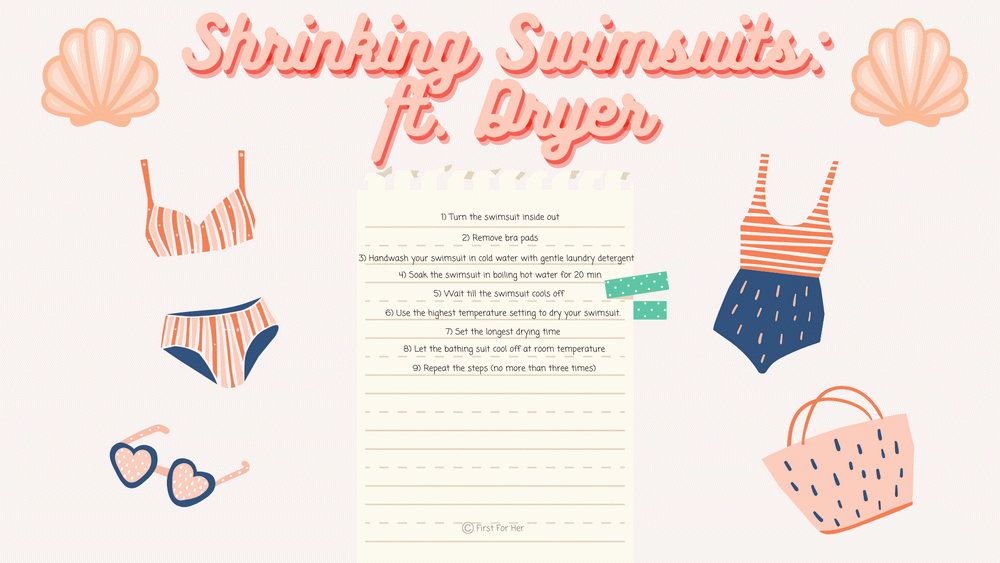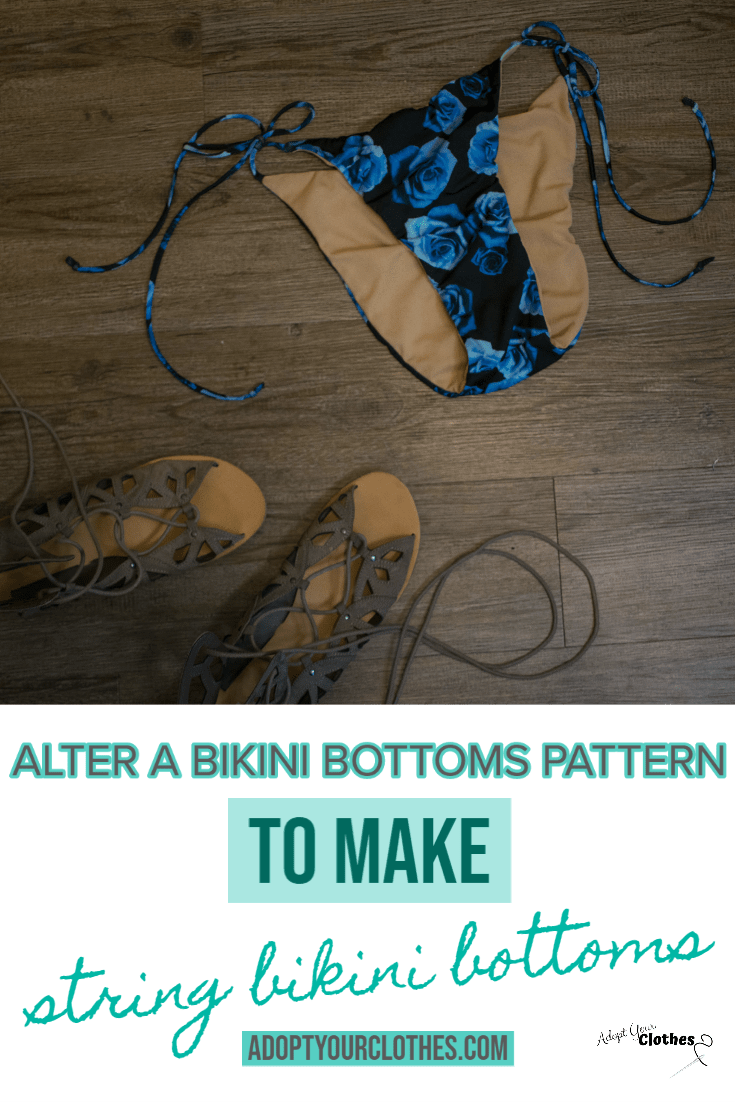Content Menu
● Understanding Swimsuit Materials
● Methods to Make Your Swimsuit Smaller
>> Using Heat: The Dryer Method
>> Boiling Water Technique
>> Sewing Techniques
>> Adding Elastic
>> Using Iron-On Hem Tape
>> Ruching Technique
● Tips for Success
● Maintaining Your Resized Swimsuit
● When to Consider Professional Alterations
● Conclusion
Summer is just around the corner, and it's time to dust off your favorite swimsuit. But what if you find that your once-perfect swimwear is now a bit too loose? Don't worry! There are several ways to make your swimsuit smaller without having to buy a new one. In this comprehensive guide, we'll explore various techniques to help you achieve the perfect fit for your swimwear, whether it's a one-piece, bikini, or any other style.

Understanding Swimsuit Materials
Before we dive into the methods of making a swimsuit smaller, it's essential to understand the materials commonly used in swimwear. Most swimsuits are made from synthetic fabrics like nylon, polyester, or spandex (also known as Lycra or elastane). These materials are chosen for their durability, stretch, and quick-drying properties. However, they can sometimes lose their elasticity over time, leading to a looser fit.
The good news is that many of these materials can be manipulated to shrink slightly, allowing you to adjust the fit of your swimsuit. Keep in mind that different fabrics may react differently to various shrinking methods, so it's crucial to approach each technique with care.
Methods to Make Your Swimsuit Smaller
Using Heat: The Dryer Method
One of the simplest ways to shrink a swimsuit is by using heat from your clothes dryer. This method works well for swimsuits made primarily of nylon or polyester.
Steps:
a. Wash your swimsuit in cold water to clean it thoroughly.
b. Remove excess water by gently squeezing the swimsuit (do not wring it out).
c. Place the swimsuit in the dryer on the highest heat setting for about 10-15 minutes.
d. Check the fit periodically to ensure you don't over-shrink the suit.
e. Once you've achieved the desired size, remove the swimsuit and let it cool down.
Remember that this method may need to be repeated a few times to achieve the desired result. However, be cautious not to overdo it, as excessive heat can damage the fabric or cause it to lose its elasticity.

Boiling Water Technique
For swimsuits that need a more significant size reduction, the boiling water technique can be effective. This method works well for synthetic materials like nylon and polyester.
Steps:
a. Bring a large pot of water to a boil.
b. Turn off the heat and immediately submerge your swimsuit in the hot water.
c. Leave the swimsuit in the water for about 5-10 minutes.
d. Remove the swimsuit using tongs and let it cool down slightly.
e. Gently squeeze out excess water (do not wring).
f. Hang the swimsuit to air dry or use the dryer method mentioned above for additional shrinkage.
This technique can be quite effective, but it's important to monitor the process closely to avoid over-shrinking or damaging the fabric.

Sewing Techniques
For those who are handy with a needle and thread, sewing offers precise control over how much you want to reduce the size of your swimsuit. This method is particularly useful for adjusting specific areas of the swimsuit, such as the waist, hips, or bust.
a. Taking in the Sides:
◆ Turn the swimsuit inside out.
◆ Pin along the sides where you want to take it in.
◆ Sew a new seam using a stretch stitch or a narrow zigzag stitch.
◆ Try on the swimsuit to ensure the fit is correct before trimming excess fabric.
b. Adjusting Straps:
◆ For swimsuits with adjustable straps, simply tighten them to achieve a better fit.
◆ If the straps are fixed, you can shorten them by removing the stitches, cutting to the desired length, and reattaching them.
c. Adding Darts:
◆ Darts can help create a more fitted look, especially in the bust area of a one-piece swimsuit.
◆ Pin the excess fabric where you want to create the dart.
◆ Sew the dart using a stretch stitch, gradually tapering to nothing at the end.
When sewing swimwear, it's crucial to use a stretch stitch or a narrow zigzag stitch to allow the fabric to stretch without breaking the thread. Also, consider using a ballpoint needle, which is designed to work well with stretchy fabrics.
Adding Elastic
Incorporating elastic into your swimsuit can significantly improve its fit, especially for loose areas around the legs or waist.
Steps:
a. Measure the area where you want to add elastic (e.g., leg openings or waistband).
b. Cut a piece of swimwear elastic slightly shorter than this measurement.
c. Pin the elastic to the inside of the swimsuit, stretching it slightly as you go.
d. Use a zigzag stitch to sew the elastic in place, stretching it as you sew.
e. Trim any excess fabric if necessary.
This method is particularly effective for bikini bottoms or the leg openings of one-piece suits that have become loose over time.

Using Iron-On Hem Tape
For a quick, no-sew solution, iron-on hem tape can be used to take in seams or create temporary adjustments.
Steps:
a. Turn the swimsuit inside out and determine where you need to take it in.
b. Cut a strip of iron-on hem tape to the required length.
c. Place the tape between the layers of fabric where you want to create the new seam.
d. Follow the instructions on the hem tape package for ironing temperature and duration.
e. Press the iron over the area to activate the adhesive.
While this method is quick and easy, it may not be as durable as sewing, especially for areas that experience a lot of stretch or movement.
Ruching Technique
Ruching is a gathering technique that can be used to create a more fitted appearance while adding a stylish detail to your swimsuit.
Steps:
a. Decide where you want to add ruching (commonly used on the sides or back of a one-piece suit).
b. Sew a line of basting stitches along the area you want to ruche.
c. Gently pull on the threads to gather the fabric.
d. Adjust the gathers evenly and tie off the threads.
e. Sew over the gathers with a stretch stitch to secure them in place.
This technique not only helps make the swimsuit smaller but also adds a flattering texture that can camouflage problem areas.
Tips for Success
1. Always test a small, inconspicuous area first before attempting any shrinking method on the entire swimsuit.
2. Be patient and take your time. It's better to shrink your swimsuit gradually rather than risk over-shrinking it.
3. If using heat methods, be aware that high temperatures can affect the color of your swimsuit. Dark colors are particularly susceptible to fading.
4. For patterned swimsuits, be cautious when sewing or adding elastic, as it may distort the pattern.
5. If your swimsuit has padding or underwire, remove these elements before attempting any shrinking methods and reinsert them afterward.
6. Consider the overall structure of the swimsuit. Some styles, like those with molded cups, may not respond well to shrinking techniques.
7. If you're unsure about your sewing skills, practice on an old swimsuit or scrap fabric before altering your favorite piece.
8. Remember that swimsuit fabrics are designed to stretch when wet, so always try on your swimsuit when it's dry to get an accurate fit.

Maintaining Your Resized Swimsuit
Once you've successfully resized your swimsuit, proper care is essential to maintain its new fit:
1. Rinse your swimsuit in cold water immediately after use to remove chlorine, salt, or sunscreen.
2. Hand wash your swimsuit using a mild detergent designed for delicate fabrics.
3. Avoid wringing out your swimsuit; instead, gently squeeze out excess water.
4. Lay the swimsuit flat to dry, away from direct sunlight, which can fade the colors and break down the fabric's elasticity.
5. Rotate between multiple swimsuits if possible to allow each one time to regain its shape between wears.
When to Consider Professional Alterations
While many swimsuit adjustments can be done at home, there are times when it's best to seek professional help:
1. If your swimsuit requires significant restructuring, such as changing the entire shape or style.
2. When dealing with high-end or expensive swimwear that you don't want to risk damaging.
3. If the swimsuit has complex details, like intricate beadwork or delicate lace, that require special handling.
4. When you're not confident in your ability to make the necessary adjustments without compromising the swimsuit's integrity.
A professional tailor or seamstress experienced in working with swimwear fabrics can often perform alterations that might be challenging for the average DIY enthusiast.

Conclusion
Making a swimsuit smaller doesn't have to be a daunting task. With the right techniques and a bit of patience, you can adjust your swimwear to fit you perfectly. Whether you choose to use heat shrinking methods, sewing techniques, or simple adjustments like adding elastic, there's a solution for every type of swimsuit and skill level.
Remember to always test your chosen method on a small area first and proceed with caution to avoid damaging your swimsuit. With these tips and techniques, you'll be ready to hit the beach or pool with confidence, knowing your swimsuit fits you just right.
So, don't let an ill-fitting swimsuit keep you from enjoying the water this summer. Try these methods to resize your swimwear and get ready to make a splash in style!





































































